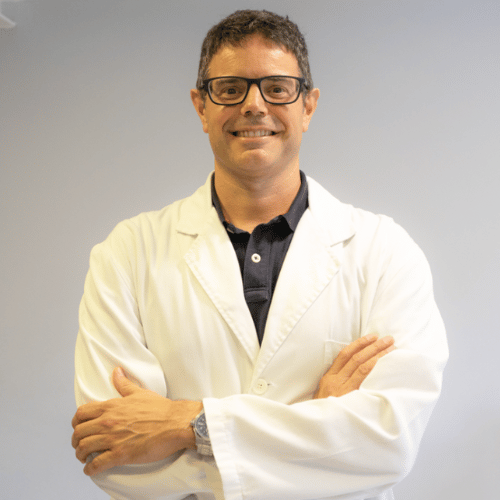Insertional Achilles Tendinopathy: Symptoms, Diagnosis, and Treatment Options
Insertional Achilles Tendinopathy, also known as insertional tendinopathy, affects the point where the Achilles tendon connects to the heel bone. This condition is especially frequent in active people and athletes, although it can also occur in individuals who do not engage in high-impact sports. Below, we explore the symptoms, diagnosis, and available treatment options to relieve Achilles heel pain.
What is Insertional Achilles Tendinitis?
The Achilles tendon connects the calf muscles to the heel bone (calcaneus), allowing for foot flexion and extension. Insertional Achilles tendinitis is characterized by wear and damage in the area where the tendon inserts into the heel. This condition results from overuse, degenerative changes in the tendon, and repetitive microtrauma, causing chronic inflammation and pain.
Symptoms of Insertional Achilles Tendinopathy
The most common symptoms of insertional Achilles tendinopathy include:
- Pain at the back of the heel: It usually worsens during physical activities such as running, jumping, or climbing stairs, as well as when standing on tiptoe.
- Morning stiffness: Affected individuals often feel stiffness in the area upon waking, which improves with gradual movement.
- Swelling and tenderness in the affected area: In some cases, redness and increased local temperature may also be observed.
- Heel spur and Haglund’s deformity: Some patients develop a bony growth (heel spur) or a prominence at the back of the heel known as Haglund’s deformity, increasing friction on the tendon.
Diagnosis of Insertional Achilles Tendinopathy
In order to correctly diagnose insertional tendinitis of the Achilles tendon, the specialists at CreuBlanca’s Foot and Ankle Pathology Unit follow a protocol that include:
- Physical examination: The specialist will palpate the heel area and assess points of pain and tenderness.
- Imaging tests: To confirm the diagnosis and rule out other pathologies, imaging tools such as ultrasound and magnetic resonance imaging (MRI) are used. These tests allow visualization of tendon damage and possible calcifications.
Treatments for Insertional Achilles Tendinopathy
Treatment options for insertional Achilles tendinopathy vary depending on the severity of symptoms and the patient’s response to previous treatments. The options are divided into conservative and surgical treatments.
Conservative Treatments
1) Rest and activity modification: It is essential to avoid activities that increase tension on the Achilles tendon.
2) Physical therapy: This includes stretching and strengthening exercises for the calf and Achilles tendon, as well as manual therapy and techniques such as electrotherapy.
3)Use of orthotics and braces: Orthopedic insoles and heel supports help reduce tendon load and improve foot biomechanics.
4) Medications and injectable therapies: Nonsteroidal anti-inflammatory drugs and treatments such as platelet-rich plasma or hyaluronic acid injections can be used to reduce inflammation and promote tendon repair.
Surgical Treatment
If conservative treatments are ineffective after 6 to 12 months, the specialist may recommend surgery, which aims to remove damaged tendon areas, remove the heel spur if present, and relieve tension on the tendon. Various surgical techniques exist, and the specific procedure will depend on the extent of the injury and the individual patient’s characteristics.
Prevention of Insertional Achilles Tendinopathy
To prevent this condition, it is advisable to perform calf and Achilles tendon stretching and strengthening exercises, wear appropriate footwear, and avoid overloading the tendon with sudden changes in physical activity.
Insertional Achilles tendinopathy is a debilitating condition if not properly treated. At CreuBlanca, we have a Foot and Ankle Pathology Unit made up of a team specialized in diagnosing and treating all foot and ankle problems, including this condition, offering personalized solutions to relieve Achilles tendon pain and restore foot functionality. Although conservative treatments are effective in many cases, surgery is a viable option for more severe cases, providing significant pain relief and restoration of function.
At CreuBlanca’s Traumatology Unit, we guarantee an immediate diagnosis of any osteoarticular and muscular injury, as well as its treatment, aiming to restore the natural state of your joints, tendons, muscles, and ligaments. We have state-of-the-art diagnostic technology and fully equipped operating rooms to provide a comprehensive and complete medical service.

